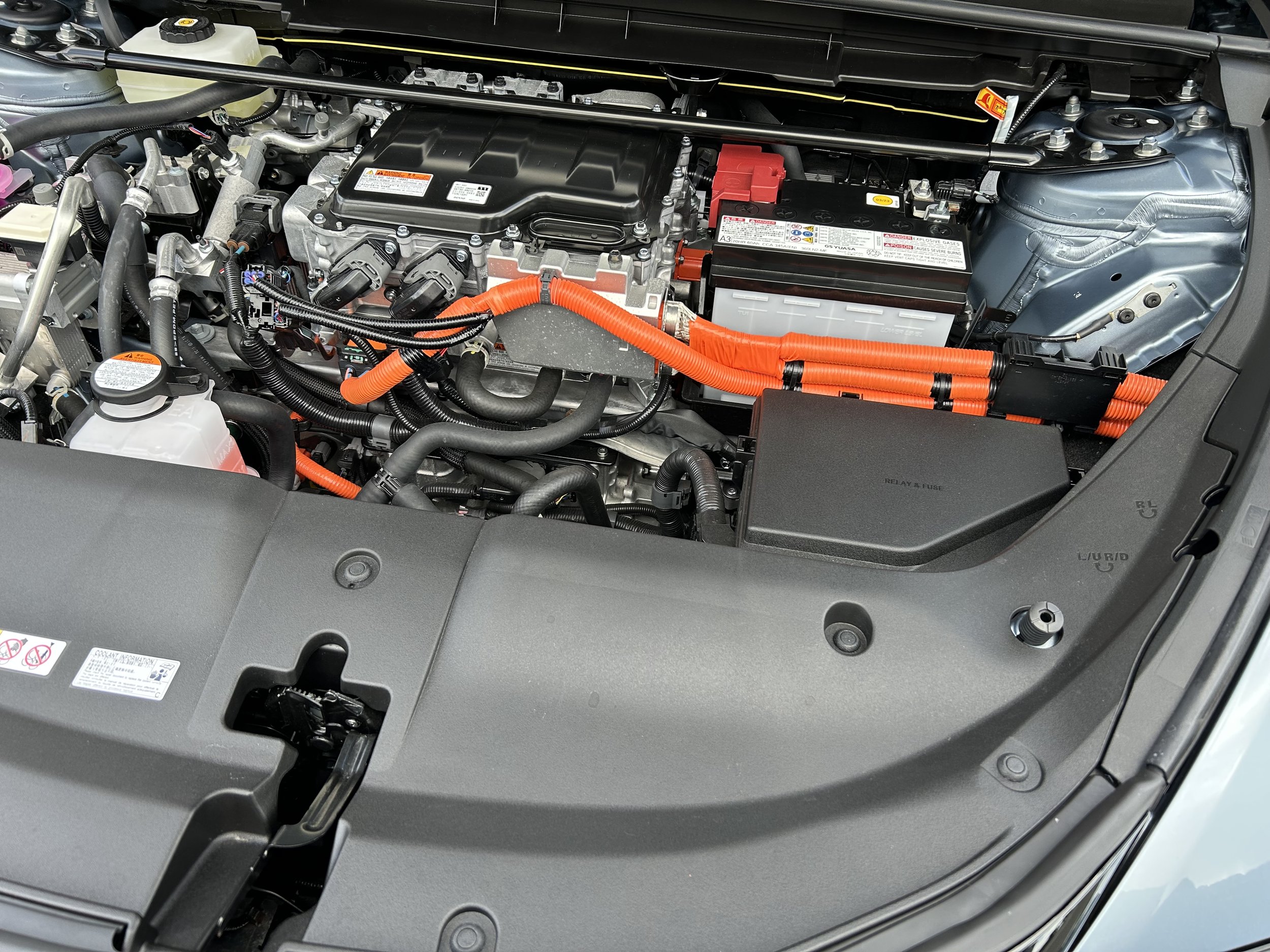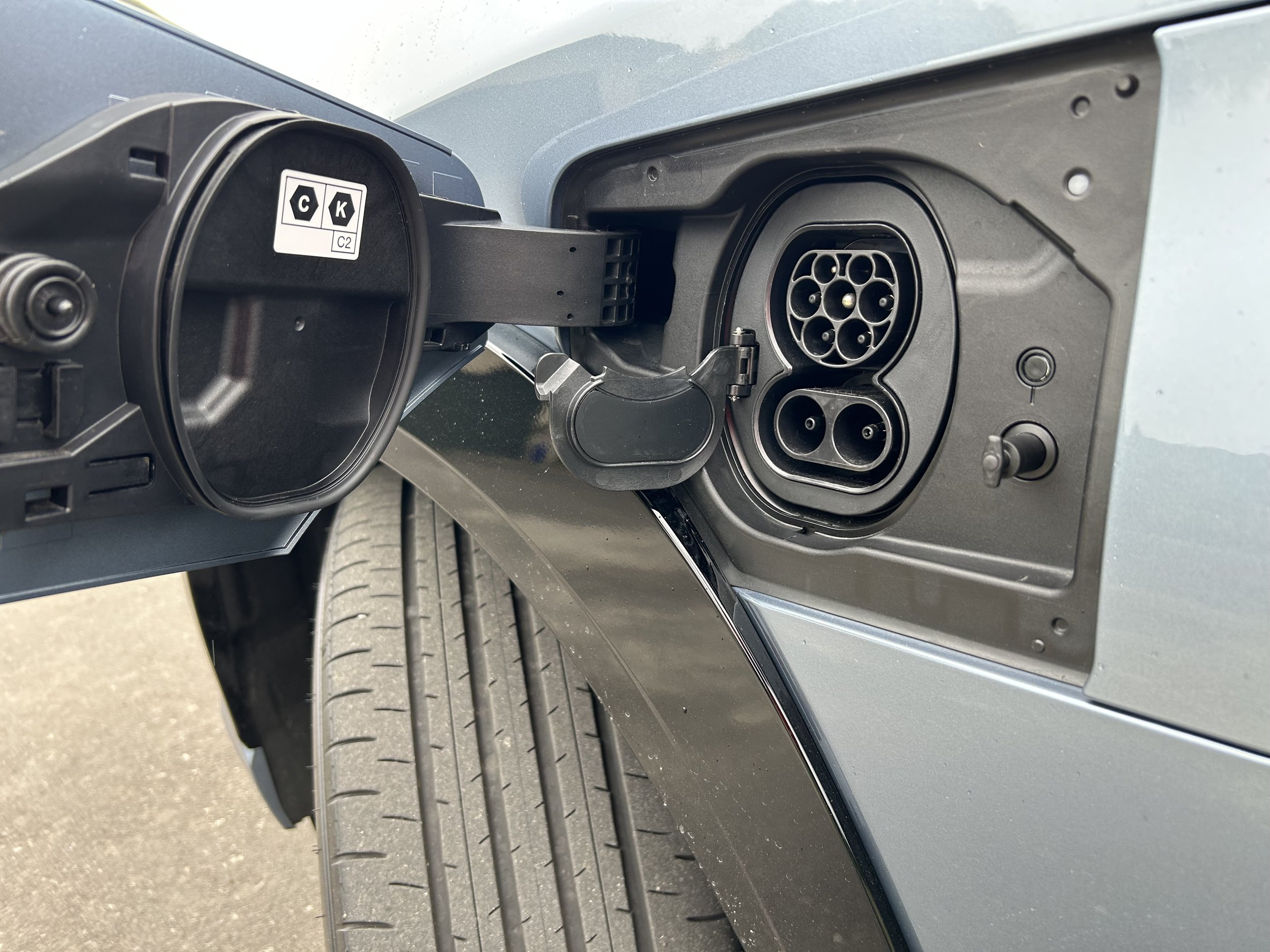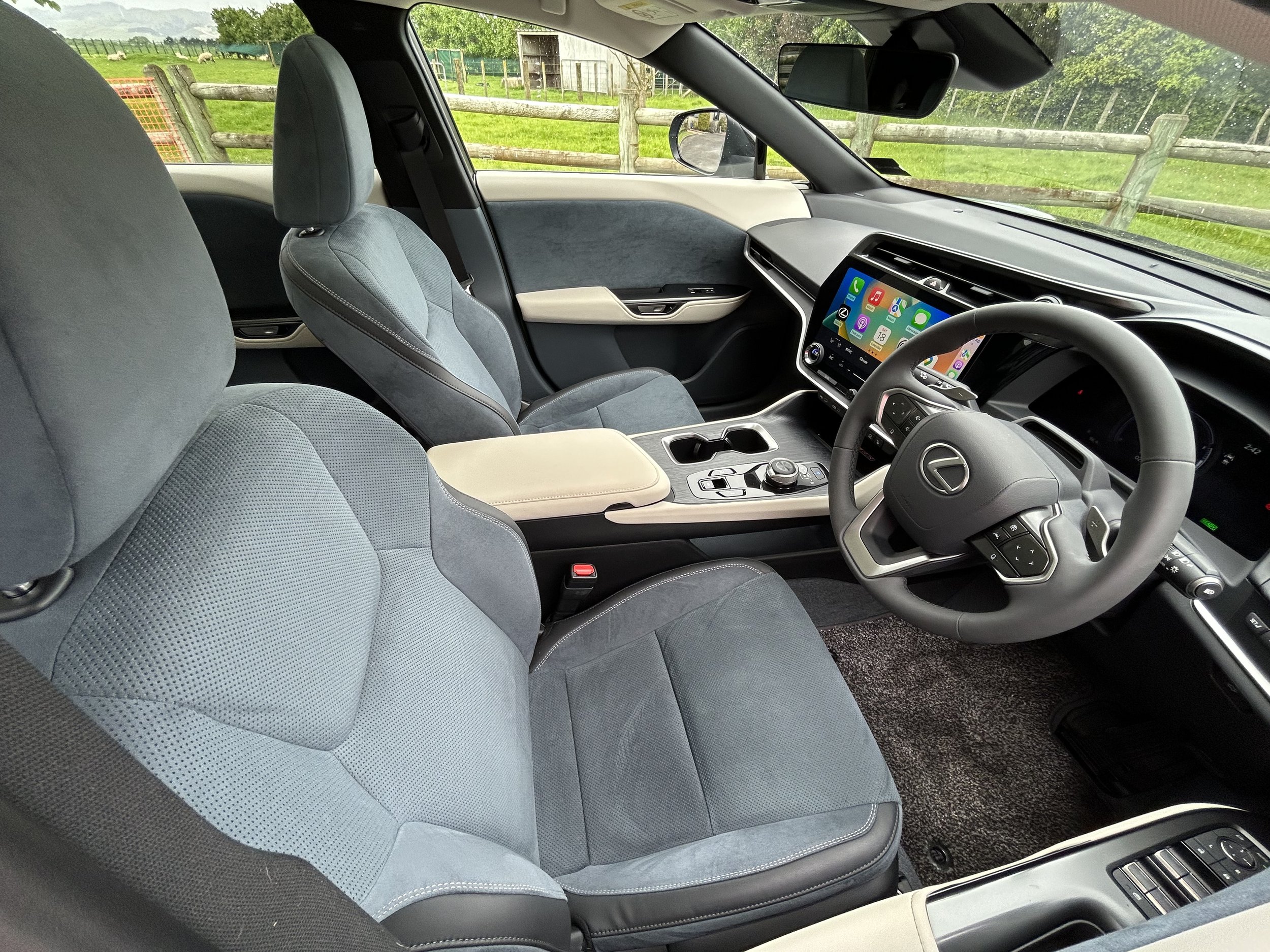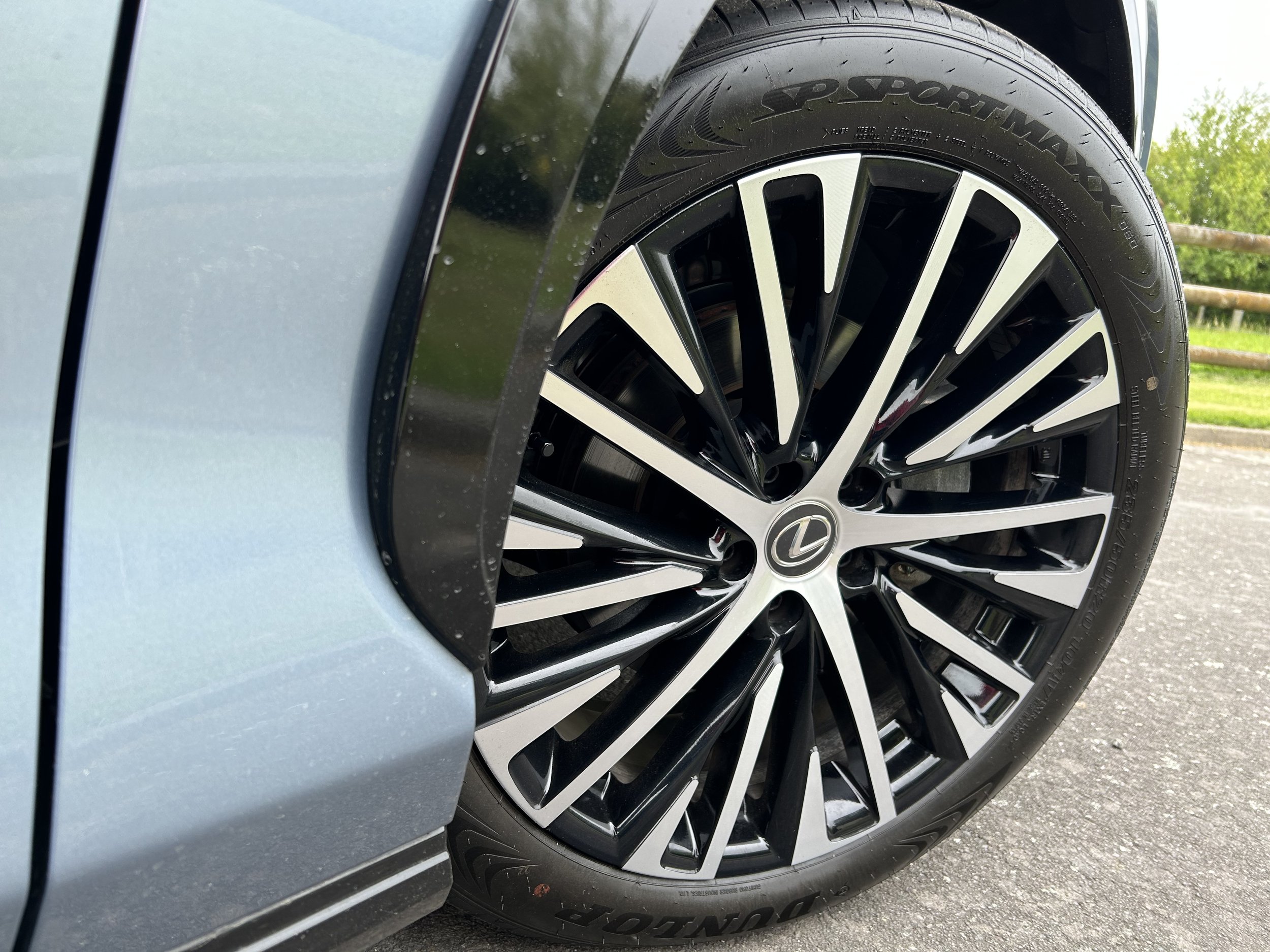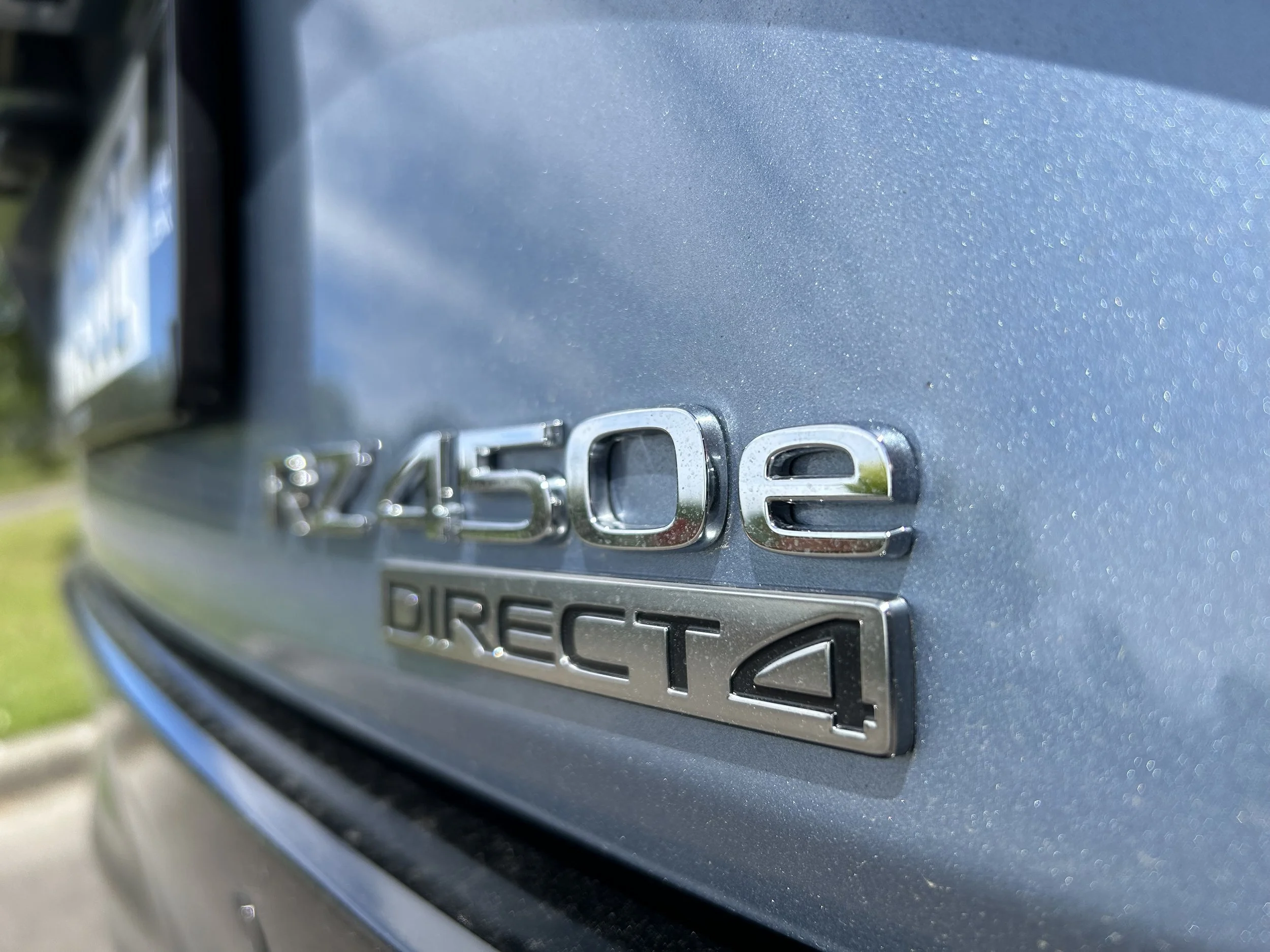Lexus RZ 450e roadtest review: Current affairs show star
/Brand quest for quietness and refinement are well-served, but fundamentals ask for improvement.
Price: $144,900
Powertrain: Dual electric motors, single speed transmission, 230kW/435Nm.
How big: 4805mm long, 1895mm wide, 1635mm high, 2850mm wheelbase.
We like: Superb build quality; friendly cabin; handsome.
Not so much: Disappointing efficiency and range; glitchy recharging; expensive.
EVERYTHING from small ‘mid-engined’ sports cars to vast crossovers, all on a modular electric car architecture delivering level of flexibility never before seen in the industry.
First out? A low-slung, sleek Lexus sedan, previewed at this year’s Japan Mobility Show in Tokyo, by the LF-ZC concept car and three other concepts. The Toyota FT-Se concept, previewing a new ‘mid-engined’-style sports car in the mould of the MR2, the imposing full-out luxury LF-ZL Lexus crossover concept, the Toyota FT-3e, a more conventional large SUV, easily pictured siting about the Toyota RAV4.
They were this year’s crop.
Late in 2021, Toyota chairman and then chief executive Akio Toyoda showed glimpses of 15 of the 30 electrics Toyota aims to have on sale by 2030 as part of its plan to sell 3.5 million EVs globally per year from then.
The unveiling of so many new cars at once – part of an 11-digit investment in EVs by Toyota – was in response to claims at the time that the firm had been slow off the mark in developing electric cars.
So those who espouse Japan’s largest car brands, also one of the world’s most powerful, has a ‘Kodak future’ when it comes to electric cars are assuming too much?
It’s true that Lexus and its Toyota parent company have thus far relied more on hybrids, with which they have had huge success, for their electric-involved push. And both have been a little slow launching fully electric cars. Yet to suggest they are ignoring that technology swing and stand to lose out from being too tardy is plain daft. A brand this large, this powerful, this well-funded should not be under-estimated.
Passing judgement on what it can ultimately do, simply by virtue of assessing what it already has out there in the battery-pure corner, would also be wrong. Let’s be frank, even in today’s battery-wed carpark, the RZ 450e on test here is no more set to be remembered as a car that rewrites the rules than its sole stablemate in the Lexus electric corner, the UX300e. It is very much a stepping stone product, one already bettered in some respects. Such is the pace of change in this sector.
Size up this model and you’ll see luxury, compact size, all-wheel-drive and performance. You might also know you’re buying a version of the Toyota BZ4X (and Subaru Solterra) - they all share the new e-TNGA (Toyota New Global Architecture) platform - but at twice the price.
The one with the bent L badge reconciles its premium by delivering with more power, a different body, and more glam. Moreso with the Dynamic here than the entry $10,300-cheaper Core. Either way, they remind Lexus doesn’t do cheap and that it’s a full blown luxury brand.
Neither does, and so is, Audi. When RZ went on sale, The Q4 e-tron 50 quattro was barely on the boat from Germany. But it’s here now and serves a reminder that it sometimes only takes one to spoil a party.
They’re close in nature, these models, and comparison shows the merit of cross-shopping, because the Audi holds a lots of aces.
In end-of-day assessment, the highest-specified Ingolstadt variant, in its all-out Sportback look, not only siting almost $13,910 less than the Dynamic - which it largely equals on spec - and in fact is also $3610 less than the Core, which it trumps, can surely hardly necessarily be a good thing for Lexus ambition?
Even if all that can be put aside, the RZ has another issue. As well-meaning as the WLTP scale for measuring range is, the figures it conjures are always estimates and some aren’t all that close to reality. That’s particularly true of the Lexus.
WLPT cites this car being good for 395 kilometres’, fully charged. The test car at full charge was less hopeful. The trip computer gauged 288kms’ driving as more feasible.
Truth or lie? True, as it turned out. A quick stop at public recharger confirmed the battery was at 100 percent. After the car had clocked 200kms, through nothing more than everyday driving - so, some at 100kmh, some at urban space, no hard out driving - the remaining range was down to 60km.
There are batteries .. .and there are batteries. But we knew that about the Toyota/Subaru fare. The RZ’s dual motor setup, though more powerful than that in the bZ4X/Solterra, draws from the same battery rated to lend 71kWh, although the net/usable capacity is 64kWh, that has been criticised overseas for poor real-life range.
Lexus is well aware the RZ's battery is smaller than that of some competitors, and in past has argued that's down to a desire to balance cost, charging and weight considerations.
Even so, Toyota (and Subaru) has now improved the battery performance and range of its 2024 bZ4X/Solterra, which NZ seems set to launch with, to cut charging times and maximise driving range.
No such improvements have been cited for the RZ, but surely needs must? The test car was part of the first shipment, so here since May, and thus in original configuration.
I’m not saying it’s mortally wounded but I would also contend either improving the efficiency, or fitting a bigger or better battery, would help this car’s standing. In present format, actual energy consumption seems to be considerably higher than the cited 15.2kWh/100km. It was commonly in the low-to-mid-20s during test. That hardly benefits ability to meet claimed driving range in real-world conditions.
Some will contend any family-sized electric new car with a sub-350km ‘real life’ range these days is challenged to win attention these days. If even 300km is a distance dream, the RZ risks being considered a car that just can't go far enough between trips to the charging point. That’ll limit its usefulness and appeal to buyers, even if most don't need a long range on a daily basis.
How the car recharges might also stand tweaking. Overseas comment related to how this set up protects against excessive high-speed recharging to preserve the longevity of the battery, which is designed to charge at up to 150kW, didn’t impact here, but the testers’s behaviour when married into 50kWh public chargers was odd.
On two occasions, each in a different location, replenishment began well only to abruptly curtail, after roughly 10 minutes, with the car thereafter completely shutting down everything onboard. I locked the car, unhooked then reset the power feed and started again … for the same outcome, again around 10 minutes in. Not ideal.
It had happily accepted overnight trickle charge; which is how the dealership readied it (though that took almost two days). But making good on cited ability to replenish from empty to 80 percent in half an hour from a fast charger (at up to 180kWh) is far more useful for daily driving.
For a brand whose image of engineering excellence is utterly deserved, this sort of behaviour isn’t great. Perhaps its why Toyota is moving on from TNGA faster than it once signalled.
Things are better insofar as broader Lexus-ness goes.
As much as the the design link to the BZ4X will seem obvious when they come together, because even though the Lexus is a little longer, it has a similar silhouette with the rakish fastback rear end and the sharp nose, the elite marque has done a good job with refining their derivative’s look.
It’s every centimetre an electric-era Lexus; a big step up from the UX in that respect. One positive is that, as with the larger Lexus RX, it steers clear of the overly-fussy Lexus' spindle grille. The bumper design still hints at the same double-trapezoid shape, but the visual aesthetic is cleaner, more modern. The smart front, and the body’s sharp, origami-style creases create positive visual interest; it looks classy.
The interior is also well considered, though it diverts a little from the usual Lexus playbook. Japan’s top maker needs no instruction on how to do a luxurious and stylish cabin and, as you’d expect, it’s also all beautifully made.
With electrics the ‘eco’ involvement is also important and, in this instance, that’s at expense of it taking leather. Rather it arrives with a wool-like material, made from recycled materials, primarily as a seat covering. It’s all well-meaning and totally on message, but doesn’t look as expensive as it undoubtedly is. Same, really, for the thick pile carpet.
If making a point about how electrics are great conduits for ‘future-reach’ tech is important, then best look up. Traditional mechanical sunroofs have drawbacks; a weight weight right up there. On a powered roof, the materials, guide rails, electric motor and shutter system can add 6kg-8kg at the highest point of the car. As well as being a CO2 burden, it’s not great for handling. Plus it takes up about 30mm of head room.
An alternative is a fixed glass sunroof that can be dimmed with a button touch or a swipe, thanks to layers sandwiched in the glass that react to an electric current. That polymerdispersed liquid crystal technology is demonstrated here. Useful? Yes, but only on bright days, else the effect is hardly noticeable. But it’s tech different, so job done.
RZ also takes the same touchscreen infotainment system as the latest-generation NX and RX SUVs, so while not quite seamless - some handy features such as the drive mode selector is hidden in a sub-menu - it is nonetheless overall much better than displays in older Lexus models. The climate control system’s mix of physical and virtual controls is appreciated; the temp adjustment is touch controlled, with a beautifully subtle illuminated colour fade.
In latest fare the Apple CarPlay integration seems extra slick, but twice when answering an incoming call, the radio audio rather than auto closing off instead kept playing on, so competed with conversation. Surely a software glitch. The Mark Levinson premium surround sound audio system is brilliant; Lexus has always favoured this supplier and never been let down, but the quality really comes through in an electric car.
The lack of a glovebox is a quirk, but there's ample oddments plenty of space. In fact, the cabin is quite roomy, with the rear doing well not just for legroom but also headroom, despite the sloping rear end. The 522-litre luggage capacity behind the rear seats is decent and, if you need even more, you can fold the back seats down to free up 1451 litres. There’s stash space under the boot floor for charging cables.
From 2025, Lexus is planning to offer 'One Motion Grip' fly-by-wire steering as an option, and that system does away with the conventional round steering wheel. Instead, you’ll get an aeroplane-style yoke from which your hands need never move unless you're switching into reverse. Some places already take the yoke, but Lexus NZ has decided to stick with traditional round. That’s fine in itself, but will I be alone in thinking the surface feel of the thing is a bit odd? There’s a slight clammy, almost-stickiness to it.
Driving-wise, it’s competent and quietly confident; with emphasis on quiet. As you knew it would be, given how much pride Lexus takes in achieving impeccable refinement.
The maximum output is 230kW, with the front-placed motor delivering more (150kW/266Nm) than the rear (80kW/168Nm). The eAxle integrates the transaxle, motor generator, and inverter all in one and supposedly evens out the flow, yet you can feel it’s a front-led drivetrain, not least under brisk acceleration.
The RZ has different driving modes; optimal for driving enthusiasts being the Sport setting that lends a sharper response to the accelerator and generally perks the car up a bit. The other options are Normal, which is the default, Eco and Range.
The Eco setting dials back the immediacy of the power delivery and generally aims to save battery, while Normal is a balance between the Eco and Sport settings, making it more than adequate for everyday use. Range snd Eco will be the settings of choice for hypermilers, but at cost to how the car operates. Eco feels dull unless you push the accelerator pedal to the floor and also turns the climate control system off altogether; in general use, it seemed preferable to use Normal and regenerating as much as possible.
One reason why the Limited has a lower cited range than Core is because it eschews the entry type’s 18-inch rims for 20s, with a lower profile tyre (but identical rolling radius). The aesthetic appearance is good and, though the base car hasn’t been driven for comparison, the ride quality on the larger wheel seems okay. Not outright soft, but not overly firm, either.
Is it sporty? Not as much as the Audi. It doesn't lean too much in corners, but the steering feel could stand sharpening and the brakes are a little uneven in feel. There’s no disguising the car’s two-and-a-touch-tonnes weight, either. It’s reasonable, but not a revelation.
Lexus Safety Sense plus means the car is stacked with driving aids and safety features; it really is looking out for you. The adaptive cruise control is particularly impressive; the speed zone alerts perhaps less so. The driver monitor is every watchful, but not to point of seeming as those it’ll wallop you for sneezing. A lazy blink or a over-long glimpse across the cabin, though, might get it’s attention.
The warnings that sound when it determines other road fare is too close - not just vehicles coming up alongside in multilane situations but bicycles and pedestrians, in some circumstances - demand acceptance, but features like blind spot warnings and cross traffic alerts if you’re backing out of a space or tight driveway are genuinely useful. The parking-assist is brilliant, thanks to a futuristic overhead display featuring a ‘transparent’ RZ. You just need to be aware that, if it detects a potential obstacle; the auto braking can be quite fierce. Anything to protect the paint finish which is very high quality.
That’s really the RZ in a nub. It is as beautifully built and presented as any Lexus. Which is to say, it sets a standard that very few others can meet. Lexus prides itself on providing a luxurious, calm driving environment. Electric power absolutely suits that ideal; the car’s progress is just as peaceful and refined as that of the original LS400, a car that turned the limo market on its head way back when. On top of that, there’s a genuinely five-star ownership support package.
Where the RZ sadly demonstrates imperfection is as an electric car. Improvement to range and curing the recharging quirks have been enabled for the other models on this platform. Those updates would also be beneficial to the Lexus.


